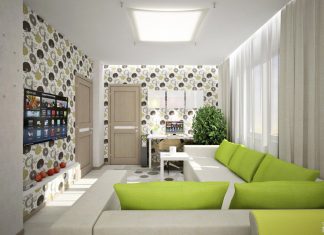Introduction
This article delves into the materials that are used to create traditional Turkish lamps, also known as Ottoman lamps. These lamps are renowned for their intricate designs, vibrant colors, and ornate embellishments. The article discusses in detail the use of glass, metal, and textile in these lamps and how each of these materials contributes to the final product. The use of glass painting techniques and intricate designs, combined with traditional elements like tassels and fringes, give Turkish lamps a one-of-a-kind beauty that is sure to add warmth and elegance to any room.
What Material is Used in Turkish Lamps?
Turkish lamps, also known as Ottoman lamps, are a traditional type of lighting that originated in Turkey and the Middle East. These lamps are known for their intricate designs, vibrant colors, and ornate embellishments. But what materials are used to make these beautiful lamps?
The most common materials used in Turkish lamps are glass, metal, and textiles. These materials add their unique characteristics to the final product, making Turkish lamps a true blend of art and craftsmanship.
Glass
Glass is one of the most important materials used in Turkish lamps. It is used to create the main body of the lamp, known as the shade. The shades of Turkish lamps are typically made from hand-blown glass, which gives them their characteristic shape and color. The shades are often decorated with intricate patterns and designs that are applied to the glass using a technique known as “glass painting.” This technique involves applying colored pigments to the glass while it is still hot and then polishing the surface to create a glossy finish. The result is a shade that is both beautiful and functional, as it diffuses the light and creates a warm, inviting ambiance.
Metal
Metal is another important material used in Turkish lamps. It is typically used to create the base and the mounting hardware of the lamp. The most commonly used metals in Turkish lamps are brass, copper, and iron. All of these metals have their unique characteristics, and the choice of metal will depend on the style of the lamp and the overall design. For example, brass is often used in traditional Turkish lamps because of its warm, golden color and durability. Copper is also a popular choice, as it has a reddish-brown color that complements the warm tones of the glass shade. Iron is often used to create more modern, minimalistic designs.
Textile
Textile is another important material in Turkish Lamps, it is used to create the tassels, cords, and fringe. These materials are used to adorn the lamps with decorative details and to add some extra weight to the lamps so they are more stable. They are often made of silk or cotton and are typically brightly colored, which creates a contrast with the metal and glass of the lamp. Textile materials are often used to add a touch of elegance and luxury to the lamps, and they also help to create a traditional and authentic look.
Mosaic Lamp
A mosaic lamp is a type of Turkish lamp that is characterized by its intricate, hand-crafted mosaic designs. The mosaics on these lamps are typically made from small, colored glass or ceramic tiles that are carefully arranged and affixed to the surface of the lamp. These designs can be very complex, featuring geometric patterns, floral motifs, or even scenes from nature or everyday life.
Mosaic lamps are made using a traditional technique known as “zellij,” which is a type of ceramic tilework that originated in ancient Mesopotamia and has been used for thousands of years in the Middle East and North Africa. The artisans who make these lamps are highly skilled and have often been trained in this technique for many years.
Mosaic lamps come in a wide range of sizes and styles. They can be small table lamps or large chandeliers and can be used for various rooms in the house, from the living rooms to bathrooms and kitchens. They are not just functional as a source of light but also as decorative objects. The light filters through the colored glass or ceramic tiles, creating a warm, inviting ambiance and a play of light and colors.
When purchasing a mosaic lamp, it is important to look for high-quality materials and craftsmanship. Make sure that the tiles are securely attached to the surface of the lamp and that there are no loose or missing pieces. It is also a good idea to purchase from reputable sources that specialize in traditional Turkish lamps, as they will typically offer high-quality products made using traditional techniques.
In conclusion, mosaic lamps are a unique and beautiful type of Turkish lamp that feature intricate, hand-crafted mosaic designs. They are made using traditional techniques such as “zellij,” and are often used to add warmth and elegance to any room. They are a great choice for anyone looking to add a touch of traditional Middle Eastern or North African style to their home.
Points to consider while dealing with Turkish lambs
When dealing with Turkish lamps, there are a few key points to keep in mind:
- Quality and authenticity: Turkish lamps are handcrafted works of art, and the quality can vary greatly. Make sure to purchase from a reputable source and look for lamps that are made using traditional techniques, such as hand-blown glass and metalwork.
- Size and proportions: Turkish lamps come in a variety of sizes, from small table lamps to large chandeliers. Consider the size and proportions of the lamp in the room where it will be placed.
- Design and style: Turkish lamps come in a wide range of designs and styles, from traditional and ornate to modern and minimalist. Choose a design that complements the overall aesthetic of the room.
- Lighting: Turkish lamps are not just decorative, they are also functional, and lighting is an important aspect of the design. Consider the type of light the lamp will provide, such as ambient or task lighting.
- Safety: Turkish lamps often have intricate designs with many small parts. Be sure to handle them with care and keep them away from children and pets.
- Care and Maintenance: Turkish lamps are delicate and require special care and maintenance. Clean them regularly, dusting the shade and wiping down the base, and avoid exposing them to extreme temperatures or humidity.
- Customization: some traditional Turkish lamp manufacturers offer customization, which can be a great opportunity to create a unique piece to match your home decor.
By keeping these points in mind, you can find a Turkish lamp that not only adds beauty and elegance to your home but also enhances the overall aesthetic and ambiance of your space.
Conclusion
In conclusion, Turkish lamps are a blend of art and craftsmanship. The materials used to make these lamps are glass, metal, and textiles. The glass is used to create the main body of the lamp, the metal is used for the base, and the mounting hardware, and the textile for the decorative details. Each material brings its unique characteristics to the final product, making Turkish lamps a true work of art. The use of glass painting techniques and intricate designs, combined with traditional elements like tassels and fringes, give Turkish lamps a one-of-a-kind beauty that is sure to add warmth and elegance to any room.















